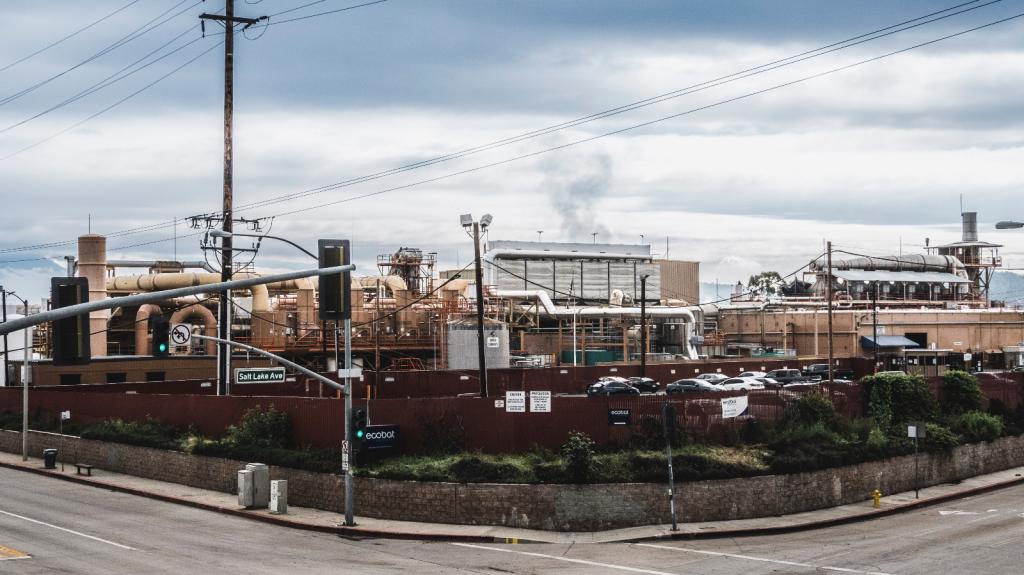 Photo: ItzaFineDayAn environmental justice coalition called the Association of Irritated Residents (not making that up) has sued to stop implementation of California’s AB 32 climate program, and it looks like they’ve won the first round. A judge has ruled that the state’s Air Resources Board didn’t fully consider alternatives to the cap-and-trade portion of the program. The launch, slated for January 1, 2012, is in limbo.
Photo: ItzaFineDayAn environmental justice coalition called the Association of Irritated Residents (not making that up) has sued to stop implementation of California’s AB 32 climate program, and it looks like they’ve won the first round. A judge has ruled that the state’s Air Resources Board didn’t fully consider alternatives to the cap-and-trade portion of the program. The launch, slated for January 1, 2012, is in limbo.
Environmental justice groups’ beef with emission trading in California goes way back, and I don’t pretend to know the entire history in detail. But as I understand it, the core of the objection is that carbon-trading programs allow individual facilities — big, dirty facilities in low-income areas — to stay open and keep polluting. Rather than lowering their emissions, fuel switching, or shutting down, they will buy carbon permits and the most vulnerable families will continue to suffer. (These clusters of polluting facilities are called “hotspots.”)
First, it’s incontestably true that low-income people and people of color suffer disproportionately from pollution, as they do from a long and damning list of social ills. The poor have virtually no voice in U.S. politics and consequently pay more than their fair share of corporate America’s externalized costs. As a general matter, any time the vulnerable and voiceless try to organize, I’m all for it.
A common response from the green community to environmental justice advocates is that carbon dioxide doesn’t have negative local effects — it disperses into the global atmosphere to do its damage — so the notion of a CO2 hotspot makes no sense. That’s precisely why cap-and-trade is set up to reduce CO2 wherever it’s cheapest to do so.
That argument doesn’t really fly, though. Greenhouse gases are emitted alongside “co-pollutants” like SO2 and NOX that do have local effects; in practice, a CO2 hotspot is a local pollution hotspot. While it’s possible to reduce those co-pollutants without reducing CO2 (indeed, pollution scrubbers often increase CO2 emissions, since they reduce fuel efficiency), it is not possible to reduce CO2 emissions without also reducing co-pollutants.
Well, with one exception: buying carbon credits! That doesn’t reduce co-pollutants. Thus the beef.
Is the beef justified, then? I don’t believe it is, for two reasons:
First, while it may be true that there should be legislation preventing the clustering of polluting facilities in low-income areas, it is somewhat odd to sue a cap-and-trade program for not being that legislation. Cap-and-trade isn’t designed to do that and as far as I know no advocate has claimed otherwise. It’s like suing an aardvark for not being a giraffe. It may be that California should have passed command-and-control regulations that would mandate pollution reductions at each individual facility. Perhaps, by addressing existing inequities, that would produce a better outcome from a social justice perspective (though I don’t think it would).
But that’s different from saying cap-and-trade creates those inequities. Why should we think that? Dozens of things go into siting a facility, and pollution regulations, of whatever kind, are generally a marginal consideration. What attracts dirty facilities to low-income communities is cheap land, desperation for economic development, and unorganized, politically powerless residents. Cap-and-trade didn’t cause that and it will take more than environmental regulations to meliorate it.
Secondly, as it happens, new research indicates that cap-and-trade systems do not create hotspots or exacerbate inequality. In the acid rain cap-and-trade program, facilities in low-income neighborhoods bought fewer permits, not more. That’s not dispositive, of course — nobody’s entirely sure how the various pieces of AB 32, and all the rest of California’s aggressive energy policies, are going to interact. But it’s suggestive.
The theoretical merits of cap-and-trade may be a close call, but in the present case it looks to me like a small group of irritated residents are putting their grievances before an extraordinary, ambitious, comprehensive, and wildly popular state program that will improve a lot of lives, provide reliable markets for clean energy, and possibly influence the course of national or international climate policy.
The burden of proof should be on those who would try to block that program. And it just doesn’t seem to me like the burden has been met in this case. AB 32 doesn’t do enough to remedy the social and economic inequities that blight America generally and California specifically — what does? — but can it seriously be argued that the state’s most vulnerable populations would be better off without it?


